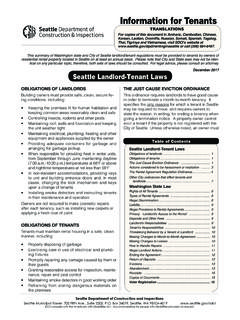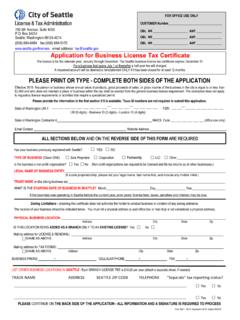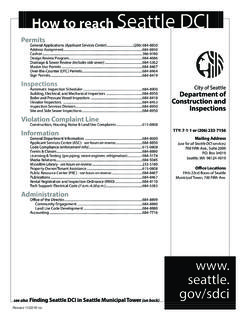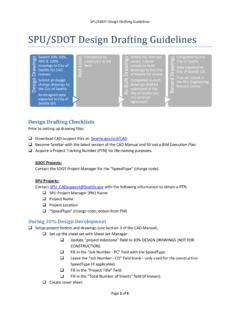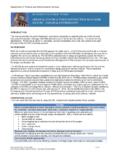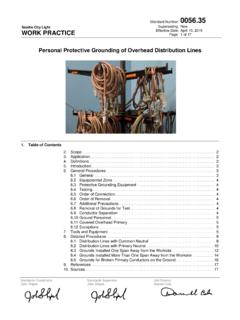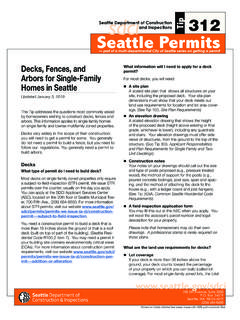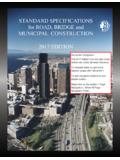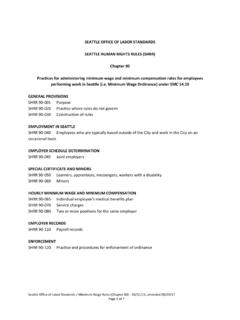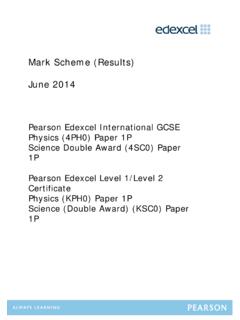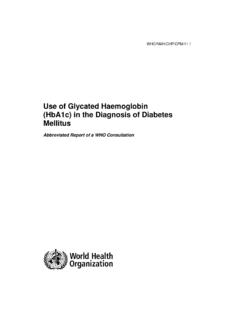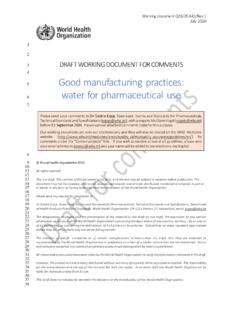Transcription of URBAN DESIGN GOALS AND OBJECTIVES
1 2 PORTAL AREA DESIGN GUIDELINES june 18, 2010 URBAN DESIGN GOALS AND OBJECTIVESThe URBAN DESIGN GOALS and OBJECTIVES establish a broad framework within for the more specific guiding principles and the visual DESIGN guidelines related to each of the portal for the safety and comfort of pedestrians, bicyclists, and transit, freight and other vehicles Create appropriate transitions from highway facilities to URBAN streets Provide adequate space and linkages for pedestrians, cyclists, and transit and freight vehicles Provide a walkable pedestrian-oriented environment that is supportive of transit Make Universal DESIGN principles and accessibility a priority Use Crime Prevention Through Environmental DESIGN (CPTED)
2 Principles to improve public safety Emphasize DESIGN features which buffer pedestrians from moving trafficReinforce the sense of place and give structure and orienta-tion to the URBAN experience Maintain key views and vistas to the city skyline, natural features and iconic elements Reveal the features of the natural and URBAN landscape that contribute to Seattle s unique identity and sense of place Create an appropriate sense of arrival and departure into and from the City Establish a vocabulary of elements that integrate well with the URBAN context and that enhance its legibility Enhance intuitive way-finding and a sense of orientation and destination Provide lighting that not only meets functional requirements but enhances the scenic qualities and night-time experience of the city Foster opportunities for the integration of public art and artistic elementsContribute positively to the fabric
3 Of the city and the unique qualities of adjacent neighborhoods Support the preservation of historic buildings and the achieve-ment of the URBAN potential of adjacent neighborhoods consis-tent with approved Neighborhood Plans Complement the context and qualities of adjacent neighbor-hoods with an appropriate scale, massing and character of the built form Foster opportunities for future development and maintain the viability of existing uses Maintain and enhance existing and potential activity linkages and a continuous system of pedestrian and bicycle friendly public spaces Minimize leftover spaces that become opportunities for anti-social behavior Preserve and respect the continuity and pedestrian orientation of historic streetscapes Contribute to the sustainability of the URBAN environment Preserve Seattle s URBAN forest and improve tree canopy cover Incorporate best management practices in the DESIGN of the stormwater system Use lighting that protects the
4 Night sky Utilize elements that promote energy conservation Encourage the use of local and recycled materials Encourage an URBAN environment that supports healthy, active living Protect and preserve natural and cultural resourcesFigure 3: Overview of Seattle, looking north along ViaductPORTAL AREA DESIGN GUIDELINES june 18, 2010 3 GUIDING PRINCIPLESThe purpose of the guiding principles is to create a bridge between the URBAN DESIGN GOALS and OBJECTIVES and the guidelines set forth in this document. Just as the URBAN DESIGN GOALS and OBJECTIVES add the consideration of how infrastructure improvements need to be conceived as part of a city-building process, the guiding principles set the broad conceptual direction for DESIGN efforts for each of the portal areas.
5 The guiding principles are geographically more focused to the specific context, issues and potentials of each of the portal areas and are intended to bring the URBAN DESIGN dimension into engineering DESIGN of infrastructure facilities and carry these forward as designs are developed, finalized and implemented. The guiding principles for the portal areas share the recognition that the DESIGN of the portal areas should reflect a sense of civic pride and identity in achieving, through the bored tunnel alternative, the way in which an existing URBAN area can enhance mobility without creating barriers and diminishing environmental quality. Underlying the guiding principles is also an understanding of the importance of building a project in a manner that will not only appropriately meet the GOALS and OBJECTIVES of the community on opening day, but one that will continue to build value and instills opportunity beyond its boundaries , contributing to the sustainability and organic evolution of the city over time.
6 South Portal Area1. A simple and elegant minimalist approach should be pursued that respects the dramatic visual context of giant gantry cranes and shipping facilities and views of the Seattle downtown skyline. 2. The existing context of the central waterfront, the Pioneer Square district, the Port and related industrial uses, and the Stadium area are important DESIGN influences that should shape the character of this transitional district. 3. The role of the South Portal as a transition to the bored tunnel and the point of arrival to the city should be made legible and provide for a natural sense of orientation. 4. The overhead bypass bridge, which connects Port activities to 519, should be designed to contribute to the arrival experience to the downtown waterfront and the city.
7 5. The ramps connecting from SR 99 to Alaskan Way should be designed to calm traffic and signal to the motorist that they are entering the city. 6. The role of Alaskan Way as a grand boulevard and linear open space of citywide significance that connects a diversity of districts along the waterfront should be The historic streetscape environment which characterizes Pioneer Square should be extended along First Avenue South. 8. Railroad Way South should be designed as an important pedes-trian and open space element that links the waterfront and the Stadium District. 9. An attractive sequence of plazas and public spaces should be designed to promote staying activities that humanize the envi-ronment and foster a sense of place.
8 10. The portside and cityside trails should be designed so that they are perceived as safe and inviting paths of travel along the water-front and connecting to the Mountains to Sound Greenway. 11. The development opportunities that are created should recognize the block pattern, scale and massing of buildings within the district. North Portal Area1. Circulation improvements should be designed to help mend the fabric of the South Lake Union, Uptown URBAN Village, Queen Anne and Seattle Center The role of the North Portal as a transition to the bored tunnel and the point of arrival to the city should be made legible and provide for a natural sense of orientation. 3. The ramps to Aurora Avenue from SR 99 should be designed to calm traffic and signal to the motorist that they are entering the The role of Aurora Avenue as a gateway from SR 99 into the city should be expressed and reinforced through the appropriate scale and treatment of appropriate elements, including landscape and lighting.
9 5. Aurora Avenue should be designed to enhance access, connec-tivity and a sense of place. 6. John, Thomas and Harrison Streets should be designed to facili-tate pedestrian, vehicular and bicycle access in the east/west direction. 7. Broad Street east of 5th Avenue should be removed and the right-of-way used to reintegrate the URBAN fabric. 8. The shaping of the portal face and the sculpting of the terrain should express the shift in geometry and help to bring together the complex vertical changes in grade at the entrance to the bored tunnel.
